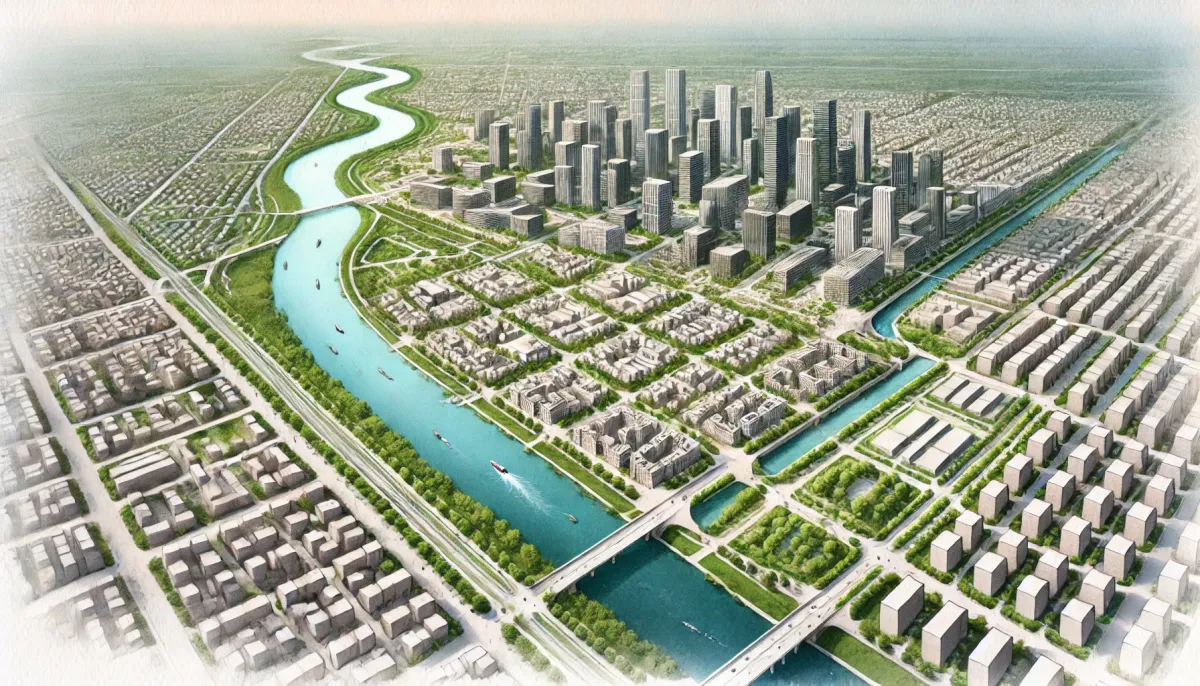Amaravati

Amaravati, planned as the capital of Andhra Pradesh, was envisioned as a world-class, sustainable city after the state’s bifurcation in 2014. Designed with high-tech infrastructure, green spaces, and riverfront development, it aimed to be a smart, transit-oriented city with iconic government buildings, business districts, and residential areas. The master plan, developed with international collaboration, featured wide boulevards, eco-friendly infrastructure, and cultural landmarks, and was envisioned to accommodate a capacity of 3.5 million residents. However, political changes, funding shortages, and land acquisition challenges stalled development, leaving much of the city incomplete. While some infrastructure has been built, the project remains in limbo, with Andhra Pradesh’s government shifting focus away from Amaravati as a centralized capital. The city's future depends on political stability, investment, and long-term urban planning commitment.
Amaravati was planned as a new city, not just a district, but its development has stalled, leaving it incomplete. Envisioned as the new capital of Andhra Pradesh after the state’s bifurcation in 2014, Amaravati was designed as a smart, sustainable city with government buildings, business hubs, residential areas, and transit infrastructure. Unlike an urban district that expands an existing city, Amaravati was intended to be built from scratch on the banks of the Krishna River, forming a new administrative and economic center.
However, due to political shifts, funding challenges, and land acquisition disputes, progress has been slow, and Andhra Pradesh has deprioritized Amaravati as its sole capital, raising doubts about whether it will ever function as a true new city.
Amaravati had enormous potential, but political shifts, economic slowdown, and stalled investment have left it in limbo. If government priorities shift again, it could regain momentum, but for now, it remains one of India’s most uncertain urban projects.
Strengths:
- Planned as Andhra Pradesh’s New Capital – Designed to be one of India’s most advanced smart cities, Amaravati was envisioned as a world-class administrative and economic hub.
- Initial Infrastructure Development – Some roads, government buildings, and public spaces were constructed before political and funding challenges slowed progress.
- Proximity to Vijayawada – Its location along major transport corridors theoretically supports long-term growth if development resumes.
Challenges:
- Major Political Uncertainty – After Andhra Pradesh’s government changed in 2019, Amaravati’s capital city status was scaled back, stalling construction and leading to investor uncertainty.
- Massive Real Estate Speculation Without Residents – Initially, land values skyrocketed, but with no sustained momentum, many projects remain incomplete or underused.
- Economic Activity Hasn’t Taken Off – Unlike successful planned cities (like Gandhinagar or Chandigarh), Amaravati lacks an economic anchor, leading to a near-halt in urbanization.
- Funding & Legal Disputes – The project faces legal battles over land acquisition, and infrastructure funding has significantly slowed.
| Year | Actual Population | Projected Population |
|---|---|---|
| 2014 | ~100,000 | - |
| 2025 | Data not available | - |
| 2050 | - | 3,500,000 |




